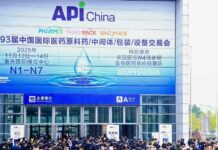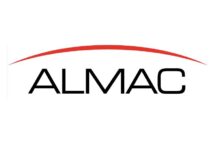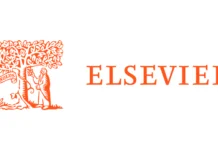In a time characterized by accelerated innovation and ever-more complicated clinical environments, Asia is witnessing an invigorating shift in the role of Contract Research Organizations (CROs). Once seen as service organizations that assist in the pharmaceutical and biotech product clinical development, CROs are now transforming into strategic partners and venture capitalists. This change deepens the alignment between outsourced clinical services and investment initiatives. This favorable development not only captures the dynamic expansion of the life sciences cluster in Asia but also indicates an active move to counterattack global competition, capital requirements, and increasing drug development process sophistication.
The Shifting Paradigm: From Service Providers to Strategic Investors
Over the past ten years, Asia’s CRO market has grown significantly thanks to favourable legislative reforms, a growing pipeline of biotech firms, and rising R&D spending. According to industry statistics, the area was home to more than 30% of all clinical trial locations worldwide in 2024, making it a vital centre for patient recruitment and early-phase research. However, several CROs have repositioned themselves strategically in response to pharmaceutical companies’ demands for more flexible and integrated relationships.
This change is best summed up by the term “Asia’s CROs are now VCs.” Several Asian CROs are now allocating funds to co-invest in innovative technologies and prospective biotech enterprises rather than just carrying out study protocols. They may strengthen their ties with up-and-coming medication developers, take part in asset creation, and open up a variety of revenue streams outside of regular fees thanks to this trend.
Drivers Behind the CRO-VC Hybrid Model
Several drivers are behind the gradual convergence of Contract Research Organization (CRO) services with venture capital operations in Asia. Firstly, the biotech startup ecosystem in the region is booming, but it is undercapitalized when compared to the West. This puts Asia’s CROs in an interesting spot; with their rich industry experience and strong networks, they are ideally positioned to detect likely firms early on and nurture them through their growth cycle.
Additionally, businesses are being forced to diversify their revenue sources and offer higher-value services due to the fierce competition in the CRO industry.┬Ā In addition to creating stronger long-term partnerships, CROs can better align their interests with the success of their customers by investing directly in startups or R&D.
Furthermore, CROs must be proactive in adopting new technologies and innovations due to the increasing complexity of clinical trials, which is being driven by trends in personalised medicine, advanced diagnostics, and health technologies.┬Ā CROs can improve service skills and business efficiency by gaining valuable insights into cutting-edge technologies as venture partners.
Real-World Examples and Market Impact
Key Asian Contract Research Organizations (CROs) have successfully shifted to a hybrid model that coupled venture capital (VC) investments with its core service business. In particular, WuXi AppTec, the most dominant CRO in China, greatly expanded its venture capital business, investing hundreds of millions of dollars in biotech ventures and cutting-edge technology platforms. This coupling of its venture business with services not only creates synergies that amplify innovation streams but also extends its market coverage.
In Japan, CROs are entering strategic collaborations with local as well as global venture funds to jointly invest in innovation in clinical research and next-generation therapeutics, hence enhancing their operational effectiveness. In South Korea, CROs are taking a growing interest in early-stage investment, with a strong emphasis on digital health innovations and AI-enabled drug discovery platforms.
As per PitchBook data, venture funding for Asian biotechs jumped to $7 billion in 2024, registering a 25% year-over-year increase. The role of CROs in venture capital has been a major contributor to this capital injection, showcasing their changing definition as ecosystem architects instead of simple service providers.
Benefits for Stakeholders: A Win-Win Scenario
Intermixing of roles between Contract Research Organizations (CROs), biotech startups, and investors is beneficial to both parties. Venture investments benefit CROs by exposing them to early-stage breakthrough technologies, helping to decrease dependence on conventional fee-for-service-based models, and bringing in asset appreciation.
For start-ups, having CROs on board as investors can promote more effective clinical trial conduct through the CROs’ operational skills and large networks. This synergy serves to minimize risks associated with protocol design, patient recruitment, and regulatory considerations, ultimately enhancing the chances of successful trial results.
Investors also gain from the dual vision of CROs, involving academic, clinical, and commercial perspectives. A wider vision improves investment decisions and enables more effective due diligence. In addition, the capacity of CROs to merge service provision with investment knowledge makes a more responsive and dynamic funding landscape.
Challenges and Considerations
While the hybrid model of CRO-VC has strong merits, it also presents some serious challenges. There is a conflict of interest where Contract Research Organizations (CROs) function as both investors and service providers, which can lead to lack of transparency and destroy client confidence.
To offset these concerns, it is important to have robust governance structures and open disclosure policies in place. Regulators are closely monitoring these dynamic relationships to maintain market fairness and safeguard patient safety.
Moreover, the capital intensity of successful venture activity is high. This entails that CROs acquire financial acumen in addition to their clinical competenciesŌĆöa talent not every traditional CRO has.
The Road Ahead: Toward Integrated Life Sciences Ecosystems
The recent transformation of Asia’s Contract Research Organizations (CROs) into organizations similar to Venture Capitalists (VCs) suggests an important move towards the consolidation of integrated life sciences ecosystems in the region. As Asia keeps investing heavily in biotechnology innovation, the function of CROs is no longer confined to mere operational delivery; they are becoming increasingly indispensable drivers of scientific and commercial achievement.
This overlap between investment and provision of services is expected to foster stronger startups, compress drug development timelines, and sustain growth across Asia’s life sciences industry. Ecosystems, which will be collaborative in nature and include investors, innovators, and CROs, are more likely to be capable of competing favorably in the international market.
Conclusion
Asia’s CROs are now VCs marking a paradigm shift that is reshaping the borders of drug development and clinical research in Asia.These hybrid organisations are promoting innovation, increasing collaborations, and propelling growth in one of the most active biotech sectors globally through their distinctive blend of strategic investment and service delivery.
This blurring of borders creates new opportunities and challenges for all parties involved in the healthcare continuum, which must be handled carefully but have enormous promise.┬Ā The CRO-VC model will be a crucial pillar supporting the upcoming wave of medical advancements as Asia’s life sciences community develops further.




















